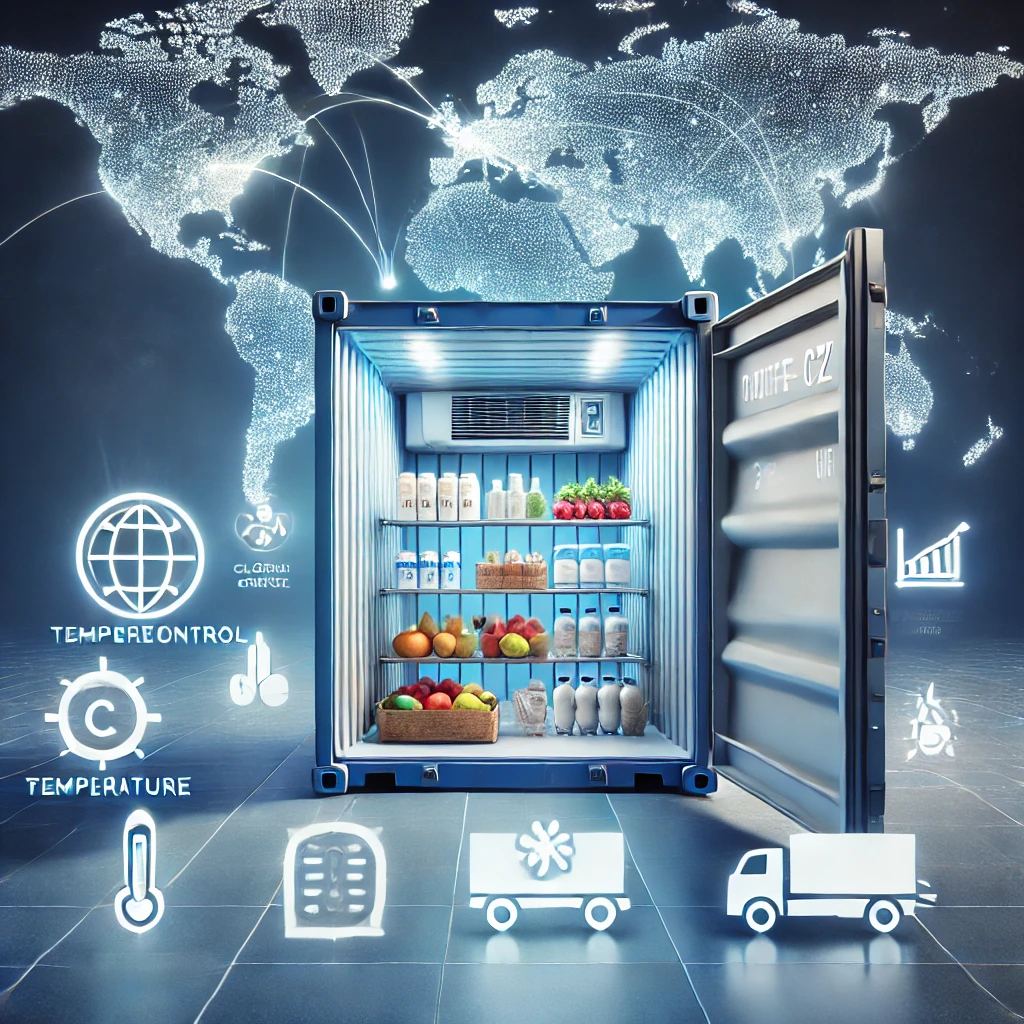When deciding between reefer containers and dry containers for your business, understanding the differences and the specific needs of your operations is key. Here’s a breakdown of each type, helping you make the best choice.
Reefer Containers (Refrigerated Containers)
Reefer containers are insulated containers equipped with refrigeration systems to maintain a specific temperature, making them ideal for transporting temperature-sensitive goods.
Key Features:
- Temperature Control: Can keep goods cool or frozen depending on the requirement, with temperature ranges from -35°C to +30°C.
- Goods Transported: Ideal for perishable items such as food (fruits, vegetables, meats, dairy), pharmaceuticals, chemicals, and other goods that require climate control.
- Power Source: Requires external power to keep the refrigeration unit running, making them more complex in terms of handling and transport.
- Cost: Reefer containers are generally more expensive than dry containers due to the refrigeration systems and the specialized handling they require.
When to Choose Reefer Containers:
- If your business involves transporting perishable goods that must be kept at specific temperatures (like food distribution, pharmaceuticals, or floriculture).
- If you need climate control even in extreme weather conditions.
- When shipping internationally or for long periods, where maintaining product quality is essential.
Dry Containers (Standard Shipping Containers)
Dry containers, on the other hand, are non-insulated, non-refrigerated containers primarily used for transporting general cargo.
Key Features:
- No Temperature Control: They are suitable for goods that don’t require specific temperature conditions, like machinery, textiles, electronics, and building materials.
- Versatility: Used for a wide variety of goods that are not temperature-sensitive.
- Cost: Dry containers are less expensive than reefer containers, making them more economical for businesses not handling perishable items.
- Availability: These containers are more common and available worldwide, making logistics simpler.
When to Choose Dry Containers:
- If you’re shipping non-perishable goods such as electronics, machinery, or bulk materials.
- If you need to transport goods in bulk without special handling requirements.
- When cost-effectiveness and simplicity are more important than maintaining a specific temperature for your products.
Conclusion:
- Reefer Containers are essential if your business deals with perishable items or goods that require strict climate control during transport.
- Dry Containers are suitable for general cargo and are more cost-effective for non-perishable products.
Choosing between the two depends on the type of goods you are transporting and your business’s logistics needs. If your business handles both types of cargo, it may be beneficial to use a combination of both container types.
 عربي
عربي عربي
عربي